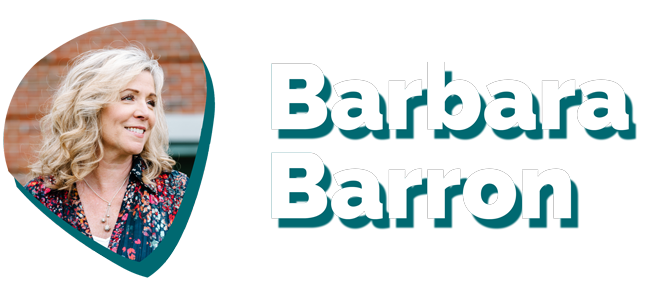by Barbara Barron | Posted January 10th, 2018
How many times has this happened to you?
It’s the beginning of the new year. Everyone is fired up and feeling ambitious. Things that didn’t feel possible before are within arms reach. You and your team get together for a series of meetings to look forward. You spend hours talking about your strategic fundraising plan.
Then, well, nothing happens. All that hard work is left on the whiteboards and post-it notes. We revert to what we’ve always done. We slump back into our office chairs, feeling defeated. Our momentum is entirely lost.
“Why does this happen?” you ask. No, you scream it to the heavens!
Well, there are lots of reasons. But if I had to name a primary one, based on what I’ve seen throughout my 17 years as an Advancement Professional, I’d say this:
Things fall apart because even best-laid plans lack the components necessary to succeed.

I’m talking about executable action steps. I’m talking about things like…
- What are the necessary resources?
- What is our clear deadline?
- What are our pain points?
Truly effective strategic plans are ones where it’s not just about the urgent or the important — but a meaningful marriage of the two. The organization’s most pressing issues are in balance with the most important ones. The strategic fundraising plan that succeeds is one that balances aspirational goals with clear-eyed analysis.
“So,” you say, “that’s all well and good, but I need specifics. How do I create a strategic fundraising plan that actually gets things done?”
I’m so glad you asked.

Step #1: Get the right people “in the room where it happens“
Yes, I’m using Hamilton to illustrate my point because – well, why not? It’s awesome.
The headline is this: who are the necessary parties you need to get together to really understand the big ideas. Who is going to build the plan?
Obviously, we need the leaders of the organizations. That’s easy. But think beyond that. Try to get voices in there that can challenges assumptions or add nuance to concepts you are taking for granted. Specifically, we should invite key stakeholders who live the program daily to sit at the table.
And go even further. Really dig in.
Is there a faculty member from whom we can get input and insight? How about an influential parent? Or even a student? After all, they have a perspective you could only dream of having.
You shouldn’t even fathom tackling something this massive until you’ve built a diverse chorus of voices who can tell it to you straight. Who can bicker, sure, but can also come to a consensus. Don’t avoid conflict or confrontation. It’s better to be clear-eyed and honest than live in a fantasy land.

Step #2: Dream big
Alright, now I’ve moved on to Dreamgirls. Because if we’re going to be building a strategic fundraising plan, we might as well have a little fun with it, no?
Okay. So here’s where you want to let the old mantra of “What would we do if we weren’t afraid to fail” guide your thinking.
Why? Because if you shoot for the moon, you’ll land in the stars, right? In other words: if you don’t think big, big things don’t happen. I’ve seen schools with five-year plans achieve their goals in as little as two, simply by being really bold.
At the end of the day, you have to believe. I know that sounds corny, but that’s really what it comes down to. This is particularly difficult to do when your school exists in a self-defeating death spiral of doubt and infighting. To be the minority that believes that things can change, it’s still no easy job. In fact, it might be the hardest thing you ever do.
But it’s worth it. If you don’t believe that, then maybe I can help you find that faith again.
Oftentimes it helps to have the facilitation skills of an outside consultant. Someone who can prompt deeper thinking and greater risk-taking. I don’t have to convince you that there’s real value in having someone who can ask the questions and make the observations no one else can, or will. Someone who can breathe some inspiration back into your organization.
Of course, I’m biased, right? This is what I do. But the reason I have a career at all is because – news flash! – it works. For over seventeen years I’ve been the person in the room pushing for more, more, more and getting – you guessed it – more, more, more.

Step #3: Do your homework.
Are we having fun, yet? This one’s from Matilda. I’ll admit I’m a little bit partial to this show, as my son performed in the touring production. So fun.
Anywho, what do I mean by “homework”? Research, essentially.
It’s time to put some realistic price tags on those dreams and plans. then, resource the heck out of it – in particular, the human capital. Getting the right professionals on the job is the best way to ensure your success. (See above point about Advancement Consultants.)
Volunteers are fantastic and valuable but they generally have other jobs and commitments. They can and should play key roles. But it’s your paid professional staff who will be accountable for meeting your goals.
Are you ready? Grab a cup of coffee. Turn off the internet. It’s time to take your ambitious goals and meticulously researched spreadsheets and tether them to reality. It’s time to craft a series of clear action steps and responsible timeframes.

Step #4: Build momentum.
And finally – A Chorus Line! A show about ambition, which you have in spades. (Wasn’t this far more fun than a bunch of pictures of calendars? I suspect you, like me, are already tuning into the musical theatre section of Pandora…)
So here’s the last step. And it’s more of “a way of thinking” than a step, actually. It’s something that you need to keep in the back of your mind when all the careful planning is completed and it’s time to actually take action.
Are you ready?
Keep moving, and move faster than you did yesterday.
This, dear reader, is what takes us from 0 to 60 in 4 seconds. If you truly believe that each day that passes should yield more than the day before, you’re suddenly expecting more of yourself and your team than ever before.
Make sure your team is acutely aware of this mindset from the minute you begin. You don’t want them thinking that you’re asking for more than what’s possible because you weren’t on the same page from the jump.
Be clear what this means. Be transparent about your part in this. Make your outcomes public to them before you ask them to follow you. Be the leader: they’re watching you. Report progress to them regularly, and expect them to do the same. Figure out what’s not working and retool, quickly.
If you’re doing it correctly, it should be just short of breathless.
Because as we wait…
…and rethink…
…and overthink…
…and hesitate, as we worry we’re being too bold…
…time becomes our enemy.
And we, and our shiny plan, become obsolete. Irrelevant.
Simple, right? But far from easy. If it was easy, everyone would be doing it, right? It takes a special type of person to make big things happen.
Lucky for us, and for your school, you are the special type of person.
My name is Barbara Barron, and I’m writing this blog to share advice on a profession that I adore.
I’ve been working in the field of Independent School Advancement for nearly 20 years. In that time, I’ve had the pleasure of creating and implementing successful Strategic Fundraising Plans for so many incredible schools. I’ve had the privilege of seeing real growth at The Carey School, Marin Primary & Middle School, Woodside Priory, Crystal Springs, Presidio Knolls and others. (Maybe we’ve met!)
Nothing makes me happier than seeing a struggling school start to thrive. My hope is that you’re here to make a positive change as well. I hope my advice can be a part of that change.
Shoot me an e-mail if you want to swap tips, or share your voice here.
Let’s do this, together.



